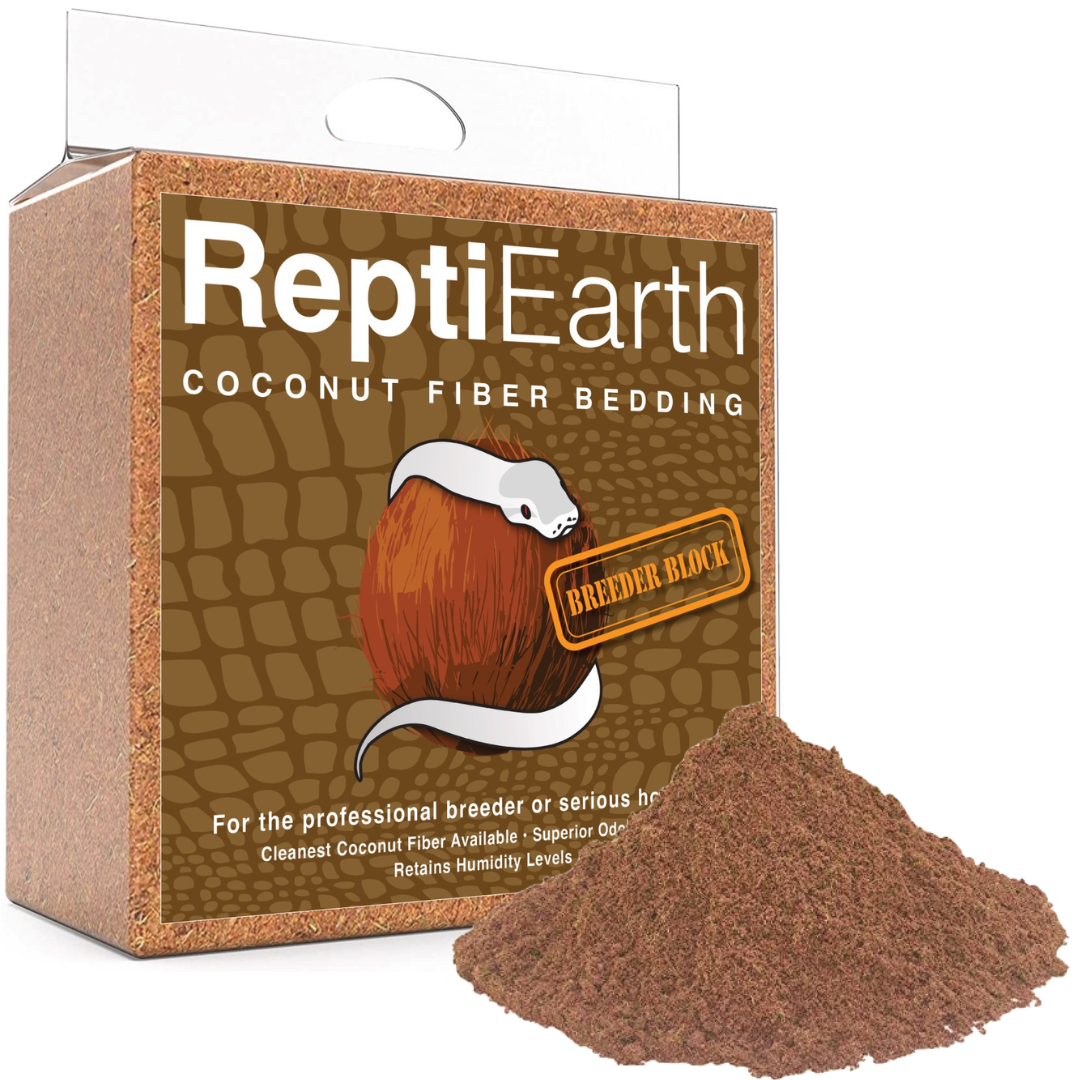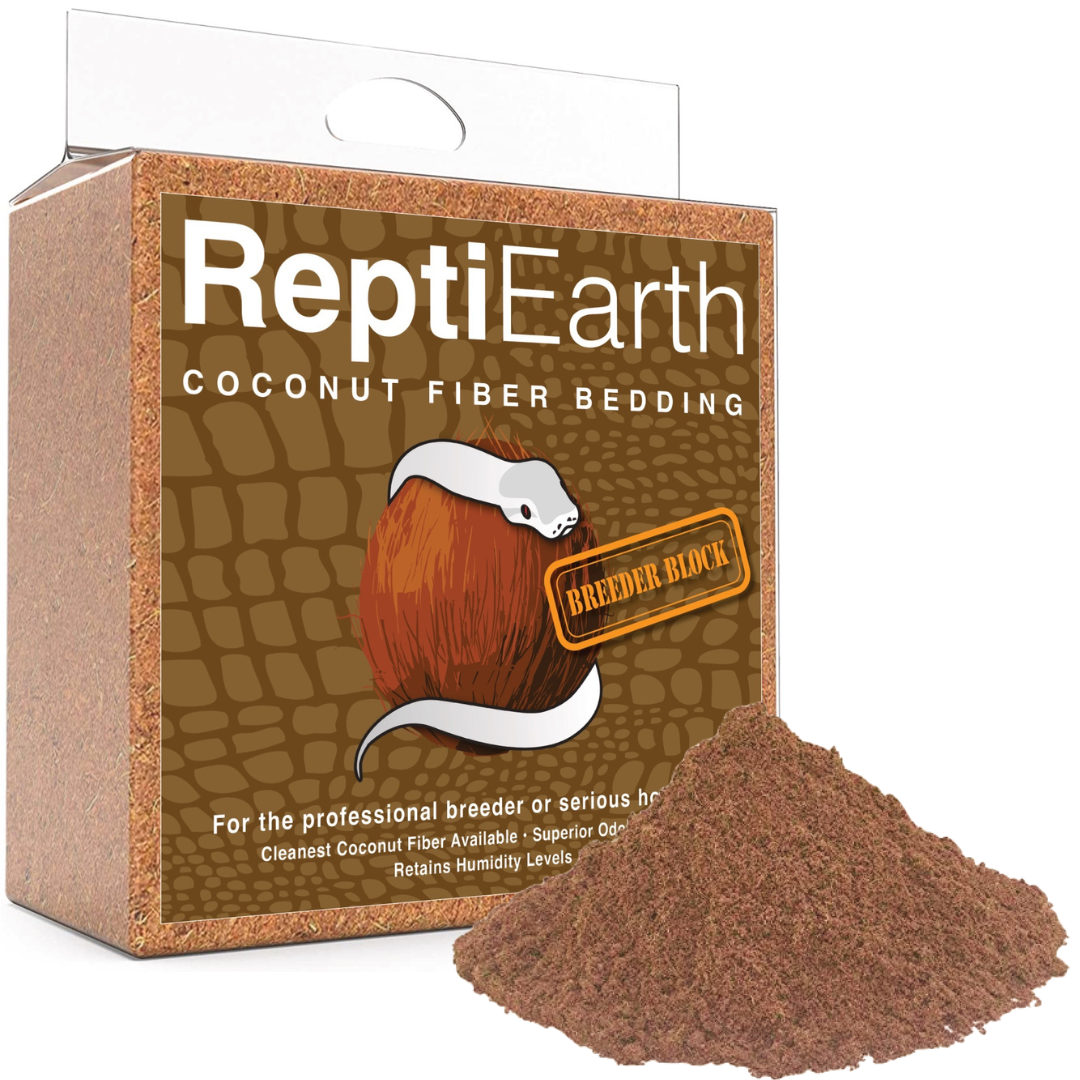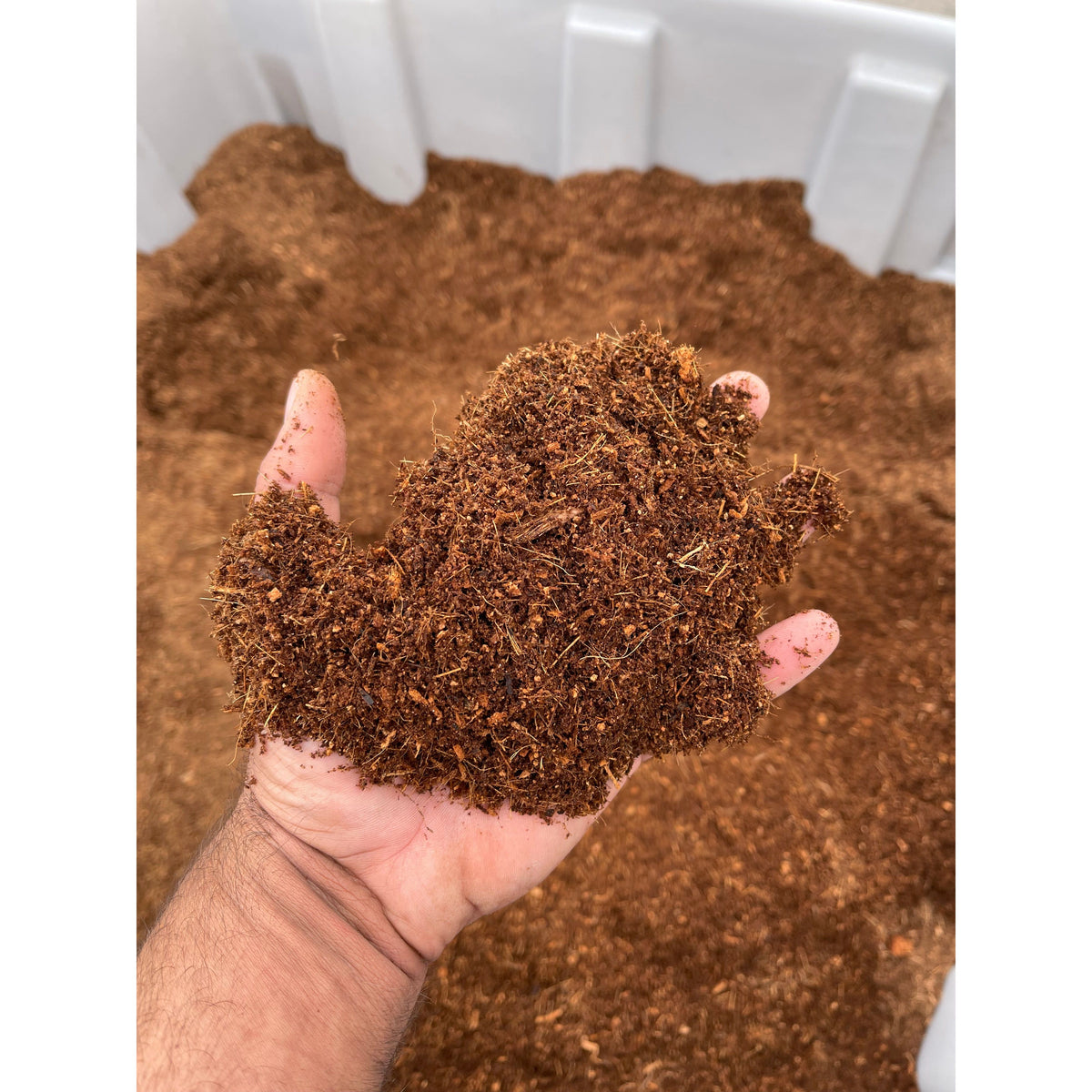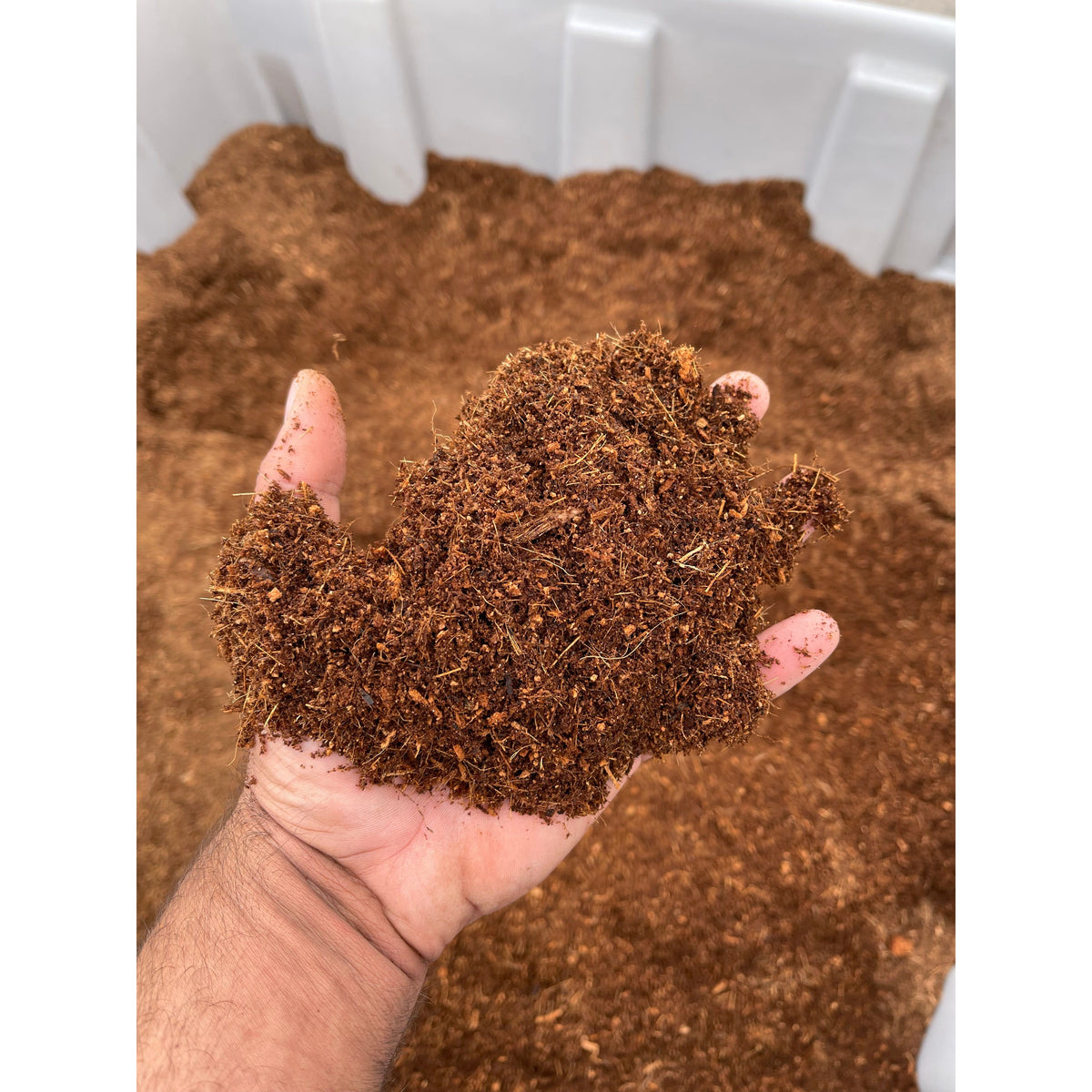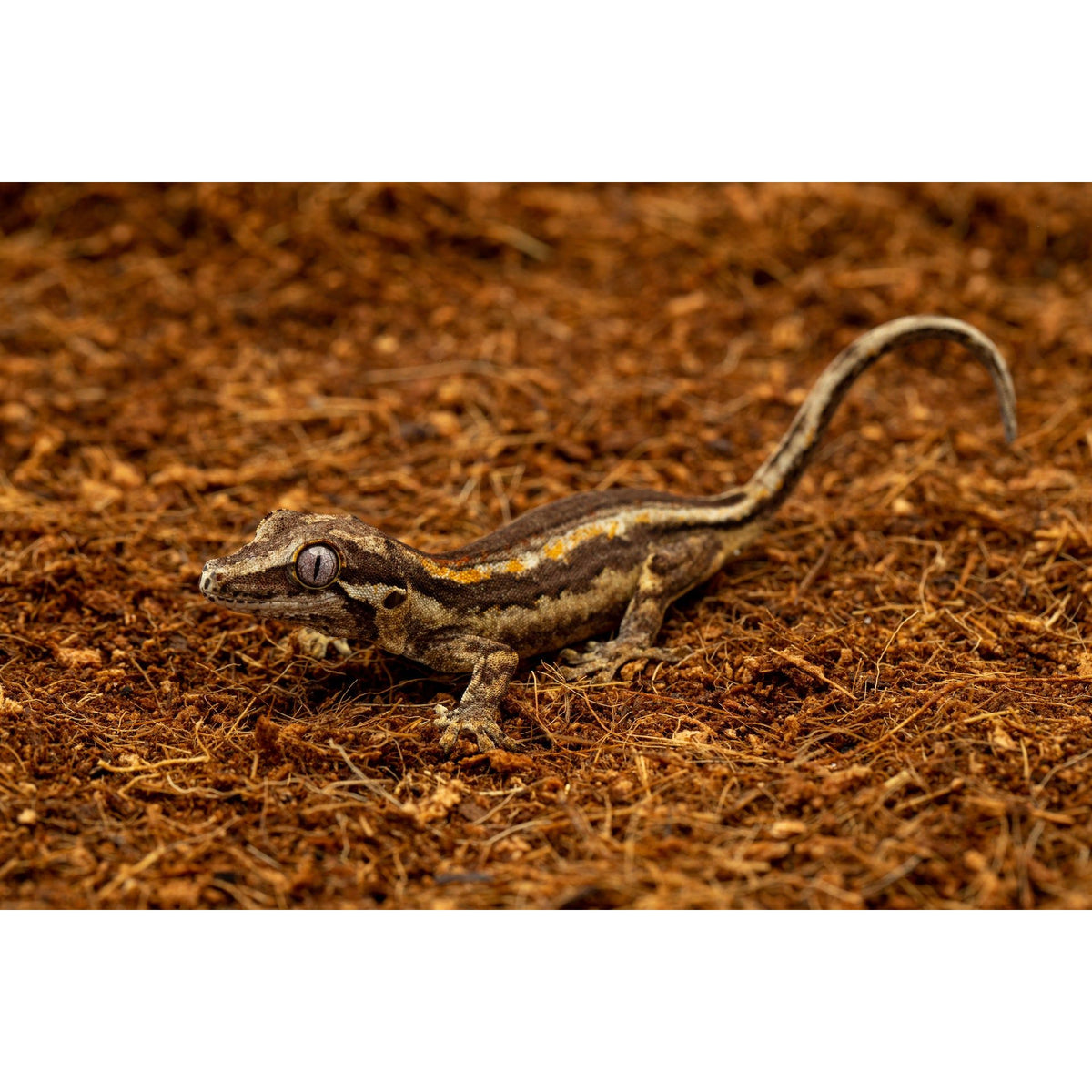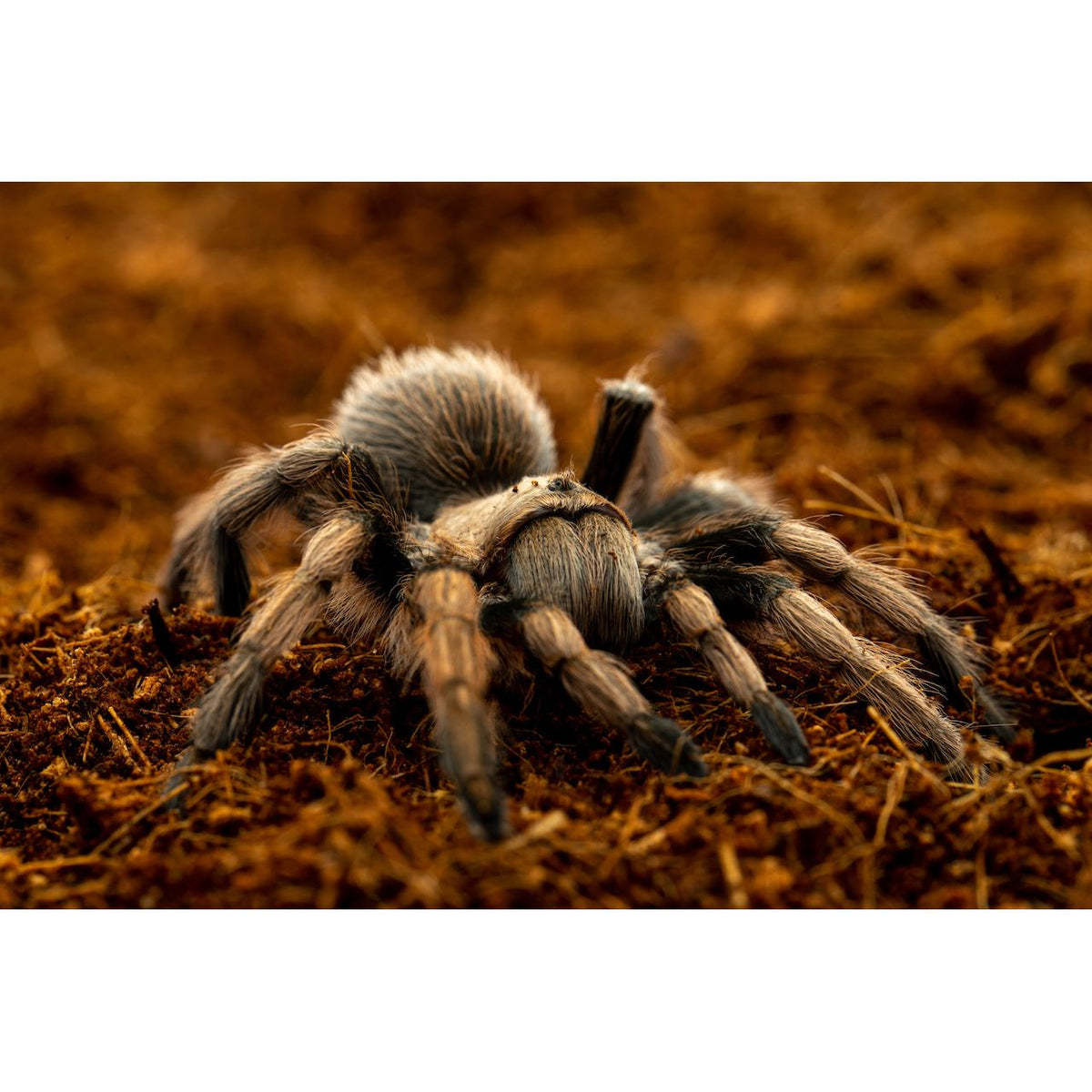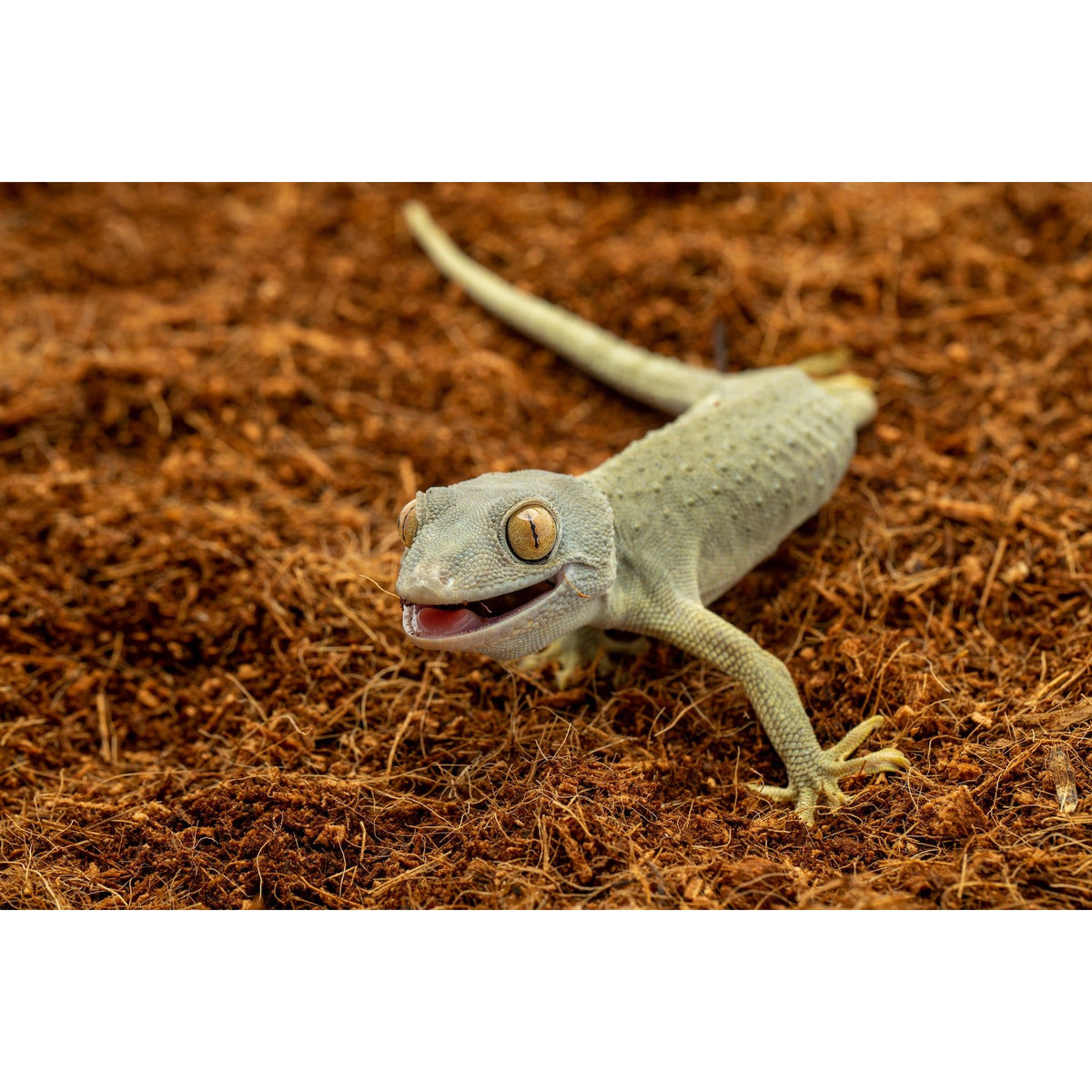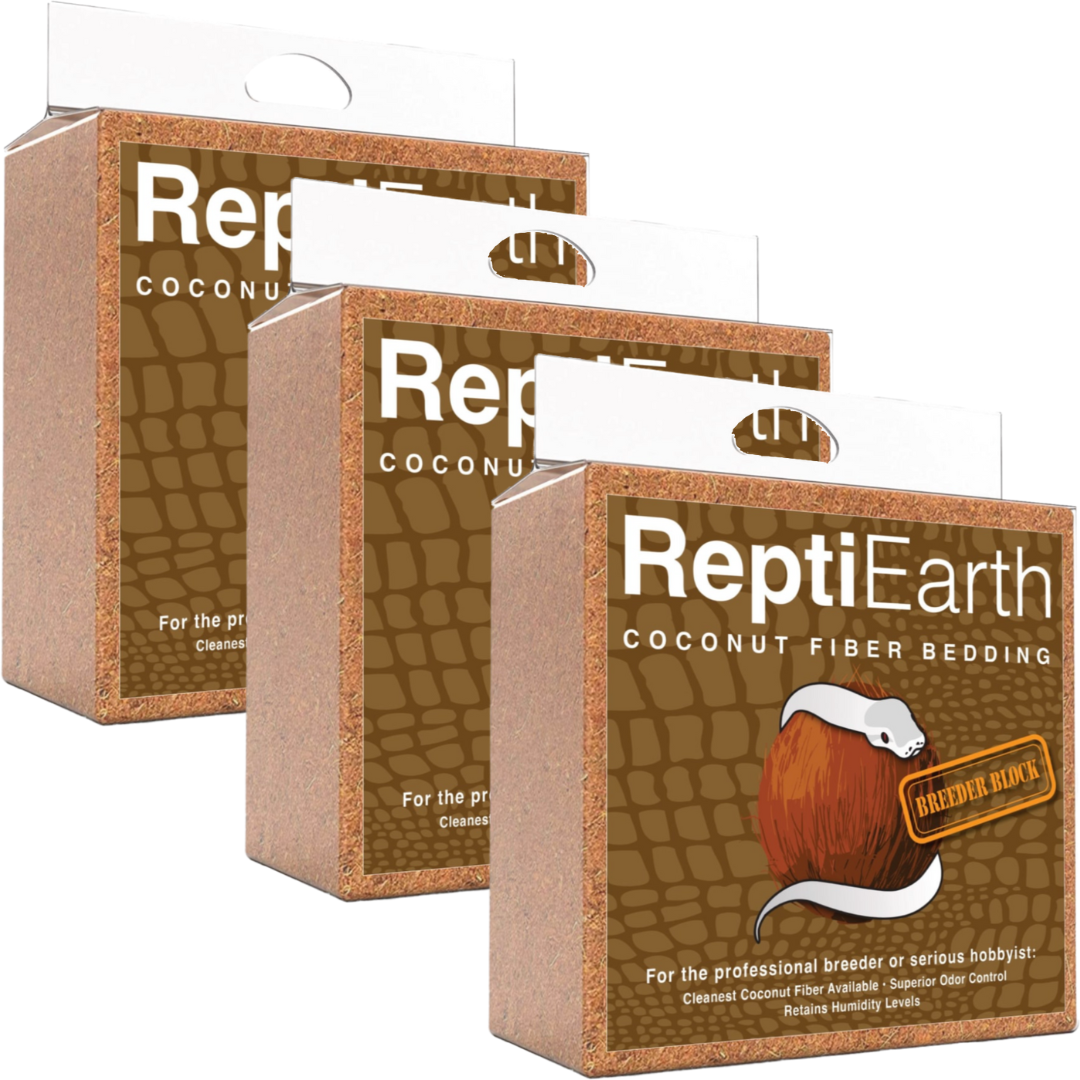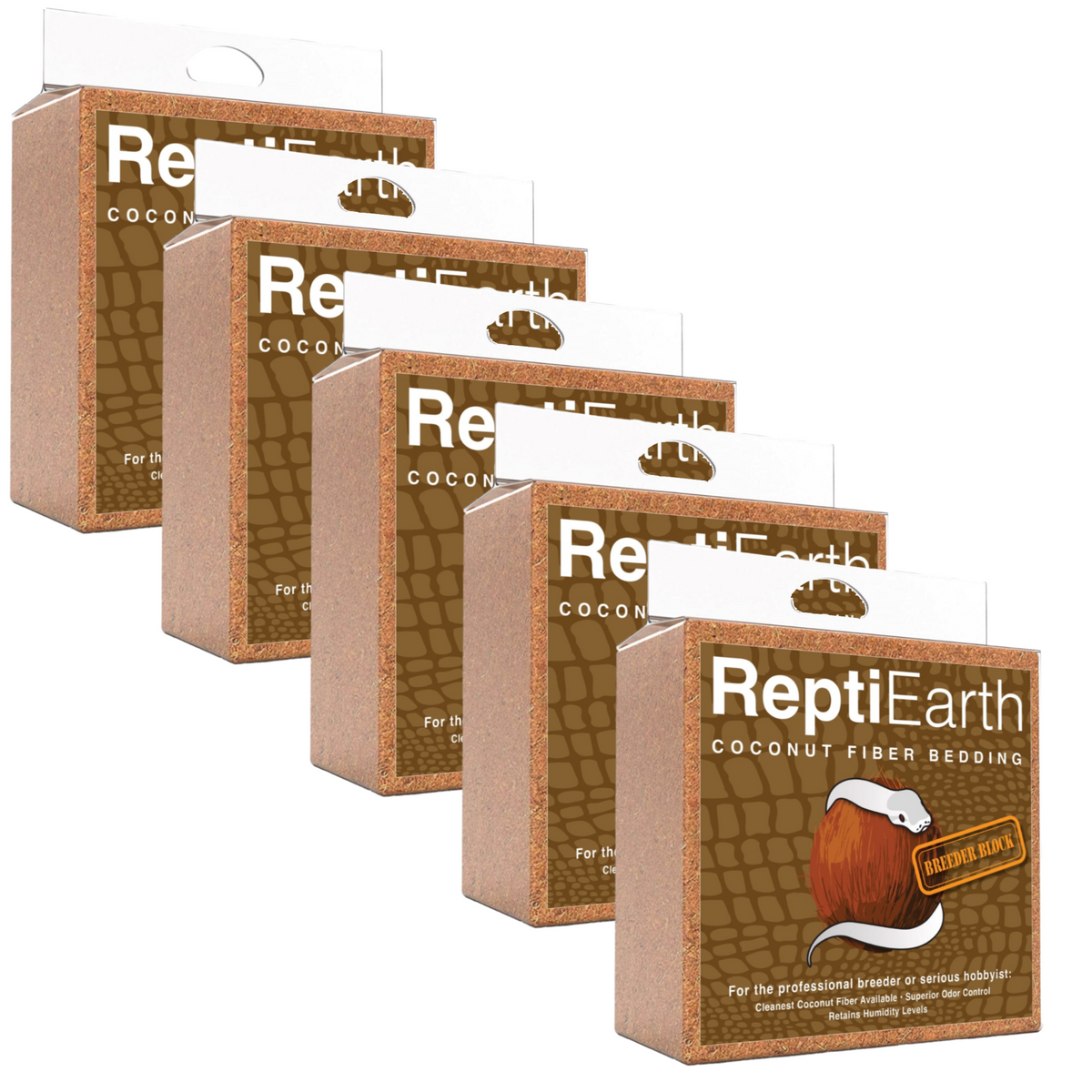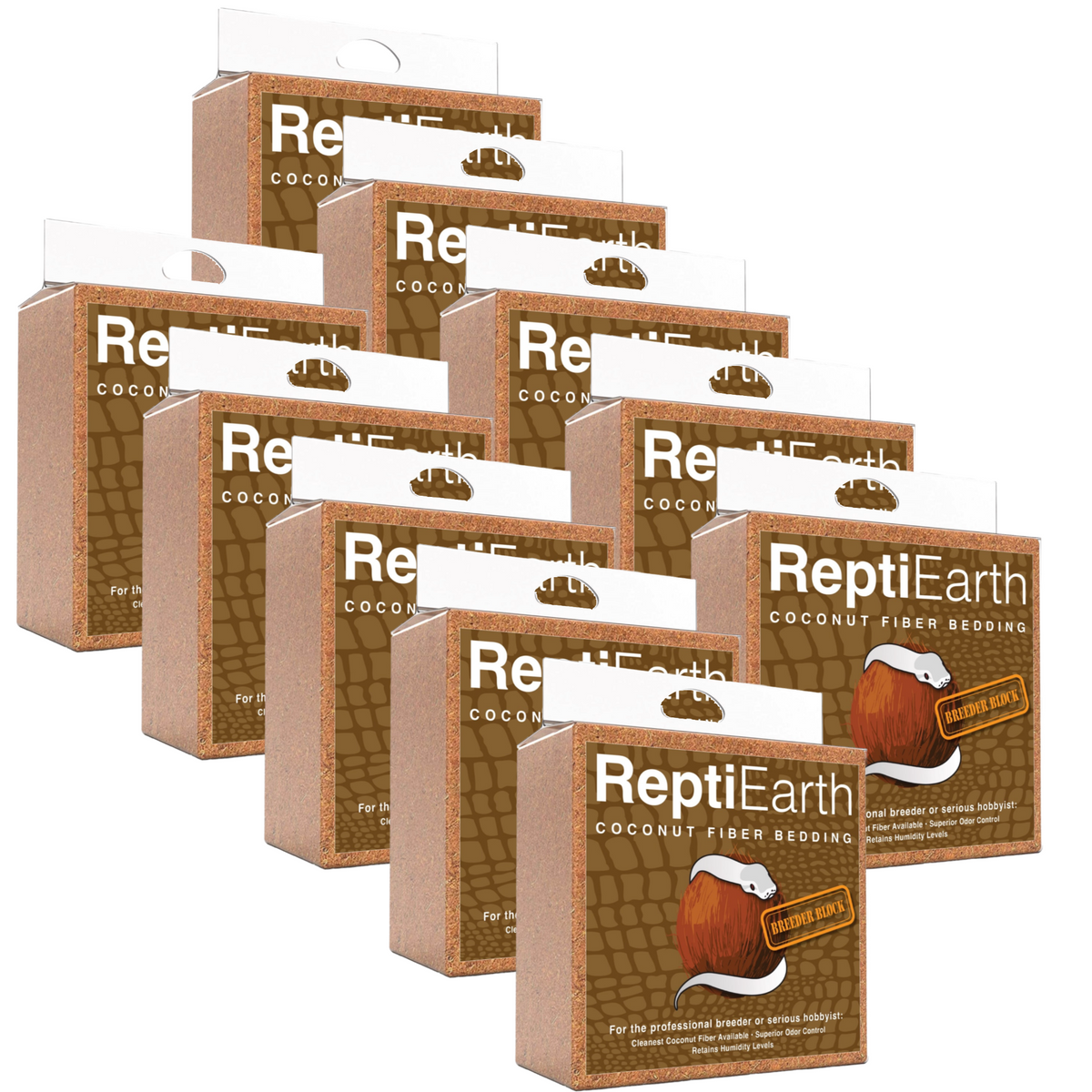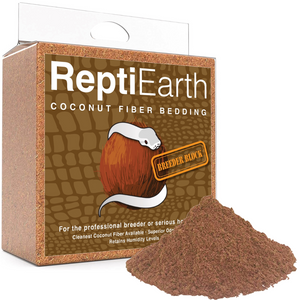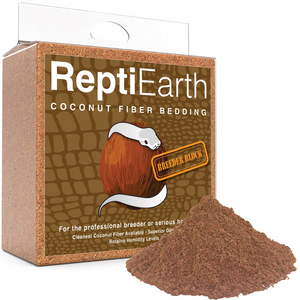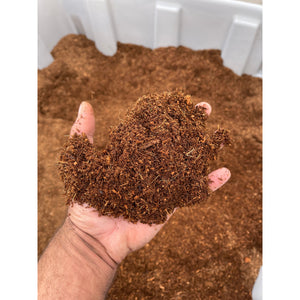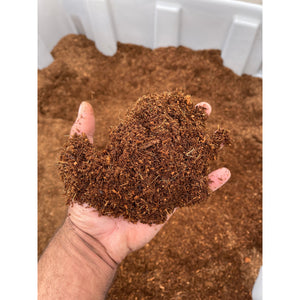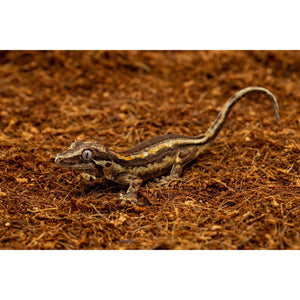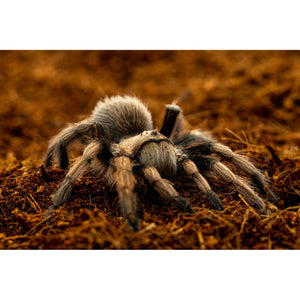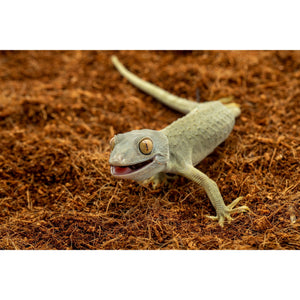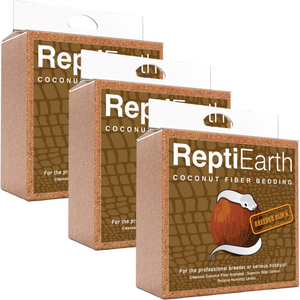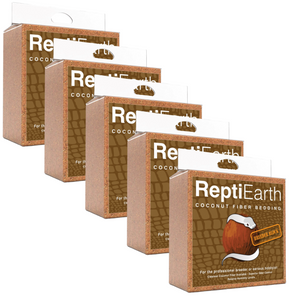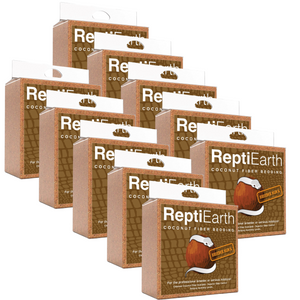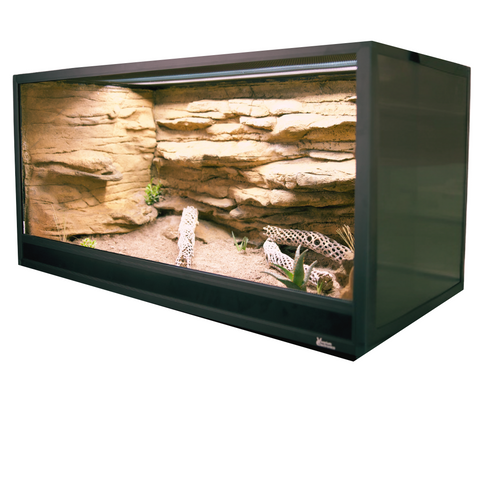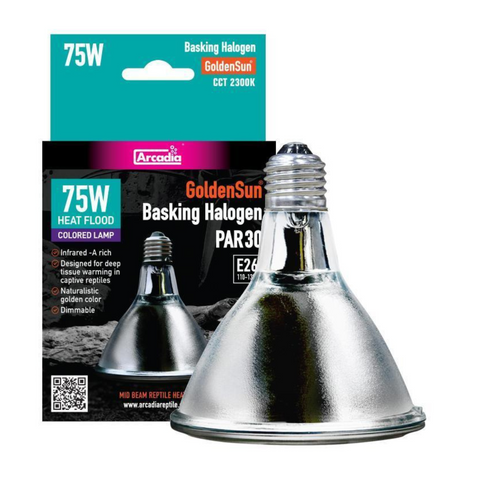Natural History
The leopard tortoise is one of the largest tortoise species, distinguished by its high-domed shell adorned with intricate black and yellow markings that resemble the rosettes of a leopard. Native to the savannas and grasslands of eastern and southern Africa, this species thrives in semi-arid environments where temperatures can fluctuate significantly between day and night. Their life cycle begins when females lay clutches of 5 to 30 eggs, typically buried in sandy soil at the onset of the wet season. The incubation period is remarkably long, often ranging from 90 to 150 days, depending on temperature and humidity levels. Hatchlings emerge as small, fragile versions of their adult counterparts and experience slow, steady growth over several decades. This species reaches sexual maturity between 10 to 15 years of age, with wild individuals frequently surpassing 50 years and captive ones sometimes reaching 75 years or more. Unlike some tortoises, leopard tortoises do not exhibit parental care; hatchlings must fend for themselves from the moment they emerge.
Leopard tortoises are primarily herbivorous, foraging for a wide variety of grasses, succulents, and broad-leaved plants in their native range. Their diet is high in fiber, and they frequently consume calcium-rich vegetation to support their robust shell development. They are diurnal in nature, meaning they are most active during daylight hours, with peak foraging occurring in the early morning and late afternoon when temperatures are moderate. During the heat of midday, they often seek shade under bushes or burrow partially into the earth to avoid overheating. Unlike some tortoise species, they are not strictly territorial and tend to be relatively solitary, though they may congregate in areas where food or water is abundant. When faced with threats, they rely on their thick, protective shell rather than aggressive behaviors, often withdrawing their limbs and head tightly inside to deter predators. They are also adept at covering long distances in search of food and water and can navigate surprisingly hilly or rocky terrain despite their heavy, domed shell.
In their ecosystem, leopard tortoises play a crucial role as grazers, shaping the vegetation structure by selectively feeding on certain plant species. Their digestive process helps break down fibrous plant material, contributing to nutrient cycling in the soil. Additionally, they inadvertently aid in seed dispersal, as undigested seeds pass through their system and germinate in new locations, supporting plant diversity. They occupy a mid-level position in the food web, serving as prey primarily to large carnivores such as jackals and birds of prey when young, though adults face fewer natural threats due to their formidable shells. Because they do not dig deep burrows like some tortoise species, they do not provide shelter for other animals, but abandoned nests may be used by insects and small mammals. Their ability to survive in relatively arid environments makes them a key species in their native range, highlighting their importance in maintaining ecological balance.
Conservation Status
The Leopard Tortoise is currently classified as *Least Concern* on the IUCN Red List, indicating that it is not presently facing an immediate risk of extinction. This classification suggests that the species maintains a stable and widespread population across much of its natural range. It inhabits a vast area covering the dry savannas and grasslands of eastern and southern Africa, from Sudan and Ethiopia down through South Africa. While population dynamics vary by region, particularly in areas experiencing habitat loss or increased human activity, the species has shown resilience in many parts of its range. The designation as *Least Concern* does not mean the species is free from threats, but rather that, at a broad scale, it has not yet reached the critical thresholds that would classify it as Vulnerable or Endangered.
Despite its relatively stable status, the Leopard Tortoise still faces several significant threats in the wild. Habitat destruction is one of the primary concerns, as agricultural expansion, overgrazing by livestock, and urbanization reduce the availability of suitable grassland environments. Fires, both natural and human-induced, can also degrade their habitat and pose direct threats to individuals. Climate change, particularly altered rainfall patterns and prolonged droughts, may affect food availability and water sources. In some regions, illegal collection for the pet trade has contributed to local declines, though this tends to be less severe than for other tortoise species. Additionally, these tortoises are sometimes hunted for meat or traditional medicine, and in agricultural areas, they may be accidentally killed by farm machinery or deliberate culling due to perceived crop damage.
Several conservation efforts are in place to ensure the continued survival of the Leopard Tortoise. Protected areas such as national parks and wildlife reserves offer stable habitats where human interference is minimized, providing essential refuges for wild populations. In some countries, legal protections regulate the collection and trade of Leopard Tortoises, helping prevent overexploitation. Captive breeding programs also play an essential role in conservation, not necessarily for reintroduction but for alleviating pressure on wild populations by supplying the pet trade through sustainable, legal means. Conservation organizations are involved in habitat restoration and public education efforts to reduce human-wildlife conflict and promote responsible ownership in areas where the species is popular as a pet. While the species is not currently at a critical risk of extinction, continued monitoring and conservation efforts will be necessary to ensure that population levels remain stable, particularly in regions where local declines have been observed.
Native Range
The species is native to the savannas and grasslands of sub-Saharan Africa, with a distribution that spans from Sudan and Ethiopia in the northeast, westward to Namibia and Angola, and as far south as South Africa. It occupies a relatively wide range across diverse regions, including parts of East and Southern Africa where expansive open habitats dominate. While its presence is widespread, local population densities can vary depending on habitat availability, climate, and human activity. The species is most commonly found in arid to semi-arid environments, avoiding extremely humid or densely forested areas.
Broadly, the species inhabits warm, dry ecosystems, particularly savannas and open woodlands where grasses and low-lying vegetation provide both sustenance and shelter. Within these macrohabitats, it prefers microhabitats that offer a balance between open basking areas and shaded retreat spots, such as beneath shrubs, in tall grasses, or near rocky outcrops. Unlike species that rely on burrowing, it seeks cover from environmental extremes under vegetation or in natural depressions in the terrain. The presence of sparse tree cover is beneficial, as it offers refuge from excessive heat while allowing adequate sun exposure for thermoregulation.
In terms of climate, the species is adapted to regions experiencing distinct wet and dry seasons. Annual temperature fluctuations are moderate to high, with daytime temperatures commonly ranging from 77°F to 95°F, though it can tolerate extremes exceeding 105°F in the hotter months. Nighttime temperatures may drop considerably, particularly in higher-altitude regions. Seasonal rainfall patterns vary across its range, but the species is typically found in areas with an annual precipitation between 11 and 40 inches, with a pronounced wet season that stimulates vegetation growth and a dry season during which plant matter may become scarce. The ability to withstand prolonged dry conditions makes it well-suited for semi-arid environments, though regular access to water—either from natural sources such as seasonal rain pools or from moisture in consumed vegetation—is important for maintaining hydration.
The species thrives in lowland to mid-elevation regions, generally inhabiting terrains ranging from near sea level up to approximately 6,500 meters above sea level. In higher, cooler elevations, it may exhibit behavioral adaptations such as increased basking to maintain optimal body temperature. The terrain in its natural range often consists of compacted soil, sandy substrates, or rocky ground, with some populations occupying areas rich in limestone or clay-based soils. While it does not exhibit fossorial tendencies, it benefits from loose soil that allows it to create shallow resting depressions. Vegetation is a key environmental factor, as it depends on a diet primarily composed of grasses, succulents, and other herbaceous plants. The availability of mixed vegetation influences seasonal foraging behavior, often guiding the species to more vegetated areas during periods of drought.
Overall, the survival of this species in the wild is closely linked to habitat stability, climate dynamics, and access to suitable food resources. Its ability to adapt to fluctuating environmental conditions has allowed it to persist across a broad geographical range, though habitat degradation and human activities pose increasing threats in some parts of its range.
Behavior
The leopard tortoise is primarily diurnal, with peak activity occurring in the early morning and late afternoon when temperatures are moderate. In its natural habitat, it adjusts its behavior according to seasonal temperature changes, becoming more active during the wet season when food is abundant and entering a more sedentary state during extreme heat or cold. Unlike some tortoise species, it does not undergo true brumation, but during prolonged droughts or cooler periods, it may reduce activity and seek shelter in burrows or under vegetation to avoid temperature extremes.
This species is generally solitary, with individuals showing little inclination toward social interaction except during mating or when congregating around food or water sources. Males can be territorial during the breeding season, engaging in head bobbing and ramming to establish dominance. Courtship is often aggressive, with males persistently following and nudging females before attempting to mate. There is no parental care, as females deposit eggs in nests and leave them to incubate without further involvement. Hatchlings must fend for themselves from birth, relying on instinct for survival.
Environmental stimuli strongly influence behavior. Leopard tortoises rely on their keen sense of smell to locate food and recognize familiar individuals. They are highly responsive to temperature changes, moving between sun and shade to regulate body temperature, a behavior known as thigmothermy. They are also sensitive to humidity levels, as excessively dry conditions can lead to dehydration while high humidity may promote respiratory issues. When disturbed, they may withdraw into their shell for protection rather than employing aggressive or evasive tactics. Unlike some other tortoise species, they do not exhibit defensive behaviors such as hissing or shell-closing mechanisms but instead rely on their heavily domed carapace to deter predators.
One of the distinguishing characteristics of this species is its ability to traverse a variety of terrains, including rocky landscapes, grasslands, and semi-arid regions. Unlike many tortoise species, it is an adept climber, capable of navigating obstacles that might deter other large tortoises. Its foraging strategy consists largely of selective grazing, favoring specific high-fiber vegetation such as grasses, succulents, and flowers. It has also been observed ingesting mineral-rich soil or bone fragments, likely as a means of supplementing calcium intake.
In captivity, leopard tortoises often exhibit reduced exploratory behavior due to the more predictable food supply and controlled environmental conditions. However, they remain highly responsive to feeding schedules and enrichment activities, such as the introduction of varied food items or physical obstacles to navigate. Stress responses in captivity can manifest as excessive hiding, loss of appetite, or restlessness if the enclosure is inadequate in size or environmental complexity. Unlike in the wild, where movement is essential for locating food and mates, captive specimens may become less active, emphasizing the need for spacious enclosures and proper diet management to prevent obesity and muscle atrophy.
Overall, the leopard tortoise exhibits a combination of slow, deliberate movements, keen environmental awareness, and a reliance on passive defense mechanisms rather than agility or aggression. Understanding these behaviors is essential for ensuring proper care in captivity, as maintaining naturalistic conditions promotes both physical health and psychological well-being.
Captivity Requirements
Enclosure Design
A well-designed enclosure is essential for maintaining the health and well-being of this species, as it requires ample space to accommodate its moderate to large size and active nature. For juveniles, a minimum enclosure size of 3 feet by 1.5 feet is recommended, though larger is always preferable. Adults, which can reach sizes of 10-18 inches in length, require significantly more space, with outdoor enclosures measuring at least 10 feet by 10 feet being ideal. When housing indoors, a minimum enclosure size of 8 feet by 4 feet should be considered, though outdoor pens replicating their natural environment are always preferable when climate conditions allow.
Enclosures should be constructed using durable materials that provide adequate ventilation while retaining heat. Wood, PVC, or high-quality plastic enclosures are appropriate for indoor setups, but they must be well-ventilated to prevent stagnant air and excess humidity buildup. Outdoor enclosures should be secure and made of concrete, brick, or heavy-duty fencing at least 18 inches high and buried 6–12 inches into the ground to prevent digging escapes. Providing a natural dirt or grass substrate allows for natural foraging behaviors, while a secure overhead cover is recommended in areas with potential predators.
A proper layout should include a basking area with direct overhead heat, multiple secure hides to provide cover and security, and appropriately arranged terrain features such as logs, low ramps, and naturalistic landscaping. Since this species does not climb well, flat, stable ground and gentle inclines should be used instead of elevated platforms. Sheltered areas should include solid-sided hides with wide openings for easy access, mimicking the cover they would seek in their arid, semi-grassy native environments.
Lighting and Heating
Providing the correct heating and lighting is crucial to ensuring proper growth, digestion, and long-term health, as this species requires a carefully maintained temperature gradient and UVB exposure. Basking temperatures should be maintained between 90–95°F, while the ambient daytime temperature should range from 75–85°F. At night, temperatures can safely drop to 65–75°F, but prolonged exposure to lower temperatures should be avoided. Heat sources should include overhead basking bulbs or radiant heat panels controlled by a reliable thermostat to prevent temperature fluctuations.
UVB lighting is essential for synthesizing vitamin D3 and allowing for proper calcium metabolism, preventing metabolic bone disease and other deficiencies. A linear T5 UVB bulb with a 10-12% output should be used, positioned 12–18 inches above the basking area without obstruction from glass or plastic. The UVB fixture should cover at least two-thirds of the enclosure to ensure sufficient exposure. A 12-hour light cycle is recommended to mimic natural day-night rhythms, with seasonal adjustments made if keeping the tortoise outdoors in a region with variable photoperiods. Natural sunlight is the best source of UVB, so outdoor access is highly beneficial when temperatures are suitable.
Substrate and Enrichment
A well-chosen substrate not only replicates natural conditions but also contributes to respiratory health, cleanliness, and enrichment. A mixture of ReptiEarth, sand, and ReptiChip is ideal, offering mild moisture retention while preventing compaction. Loose substrates allow for digging behaviors while providing a natural feel underfoot. The use of reptile carpet should be strictly avoided, as it does not hold humidity well and can cause discomfort and bacterial buildup. Indoor substrates should be spot-cleaned regularly, with full replacements performed at least every few weeks to prevent mold or bacterial growth.
Enrichment is essential to maintaining the tortoise’s physical and mental health. Large pieces of wood, scattered flat rocks, and low-lying plants provide stimulation and encourage exploratory behavior. This species thrives with access to natural grazing areas, so edible plants like hibiscus, dandelion, and various grasses should be present whenever possible. Hides should be placed in multiple locations throughout the enclosure to provide covered, secure resting areas, helping to reduce stress levels. Shallow pools should be available for occasional soaking, which aids hydration and promotes healthy skin and shell condition.
Humidity and Hydration
While these tortoises originate from semi-arid grasslands and savannahs, they still require proper humidity management to ensure healthy growth and hydration. Ideal humidity levels should range between 40–60%, with occasional increases up to 70% for juveniles to support proper shell development and prevent pyramiding. Controlled humidity is best achieved through a combination of misting, humidity-retaining substrate, and access to shaded, covered areas that hold moisture. For indoor enclosures, lightly misting the substrate in the morning helps maintain adequate humidity without oversaturating the environment.
Hydration is equally critical, and fresh, clean water must always be available in a shallow dish that is easy for the tortoise to access. Although they obtain much of their water from food, regular soaking opportunities, especially for younger individuals, help maintain hydration and prevent kidney-related issues. Water dishes should be large enough to allow soaking but shallow enough to prevent the risk of drowning. Monitoring hydration through shell and eye condition, as well as stool consistency, helps ensure this species remains healthy in captivity.
Diet & Supplementation
The diet of this species consists primarily of plant material, as it is a herbivorous reptile with specialized adaptations for grazing. In its natural habitat, it consumes a wide variety of grasses, succulents, flowers, and other forms of fibrous vegetation. Its primary food sources include species of native grasses, forbs, thistles, and occasionally the leaves and fruits of shrubs. Due to the arid and semi-arid regions it inhabits, it has adapted to survive on vegetation with high fiber content and low protein, relying on its efficient digestive system to break down tough plant matter. Unlike more opportunistic tortoise species, it does not regularly consume animal matter or carrion. However, in some cases, it may ingest small amounts of fungi or calcium-rich material, such as bones or snail shells, to supplement its mineral intake.
This tortoise is primarily a grazer, using its broad, serrated beak to clip and shred tough vegetation. It is a slow-moving forager with no predatory instincts, relying on steady browsing to meet its nutritional needs. It exhibits a strong preference for high-fiber diets, which promote healthy digestion and prevent gastrointestinal issues. Seasonal variations influence its diet, particularly in regions with distinct wet and dry seasons. During wetter months, it may have access to an abundance of fresh grasses and flowers, while in drier periods, it relies more heavily on tougher, fibrous plant material and even dry, fallen vegetation. Juveniles generally consume softer vegetation compared to adults, as their smaller size and developing digestion may make processing dense fibrous plants more difficult. As they mature, their diet becomes increasingly fibrous, which is essential for proper digestive function and shell development.
In captivity, it is critical to mimic the natural diet as closely as possible to prevent health issues such as pyramiding, obesity, or metabolic bone disease. A diet consisting of a variety of high-fiber grasses, such as Bermuda grass, Timothy hay, and orchard grass, forms the foundation of proper nutrition. Additionally, safe leafy greens, flowers, and other low-protein, low-sugar plant matter should be offered to create a balanced diet. Avoidance of excessive fruit, high-protein foods, or nutrient-poor vegetables is essential, as these can cause digestive disturbances, shell deformities, or organ damage over time. Calcium supplementation is often necessary, particularly for juveniles and egg-laying females. This can be provided in the form of cuttlebone, calcium powder (preferably without added phosphorus), or access to natural calcium sources like limestone or crushed eggshells.
One common feeding issue in captivity is improper diet composition, often resulting in excessive protein intake from foods such as legumes, commercial pellets, or high-protein greens like spinach and kale. This can contribute to rapid growth and abnormal shell development. Obesity is another concern if the tortoise is overfed or kept on a diet too rich in calorie-dense foods. Conversely, some individuals may be reluctant eaters, especially if they are stressed or kept in suboptimal conditions. Encouraging natural grazing behavior by providing fresh hay, dispersing food throughout the enclosure, or rotating food offerings can stimulate proper feeding responses. Hydration is also a key consideration, as captive conditions may differ from the natural environment. Providing occasional soaking and access to a shallow water dish can help maintain hydration levels without encouraging overconsumption of water-rich foods, which can lead to imbalanced nutrition. By carefully managing the diet and replicating natural feeding ecology, keepers can ensure optimal health and longevity.
Reproduction
Leopard tortoises reach reproductive maturity at different ages depending on environmental conditions, genetics, and overall health. In captivity, males can become sexually mature around 6 to 8 years of age, while females typically take longer, maturing between 8 and 10 years. This species exhibits noticeable sexual dimorphism, with males possessing longer, more concave plastrons and longer tails compared to the broader, flatter plastrons and shorter tails of females. These physical differences assist in successful copulation by allowing the male to mount the female more easily.
Courtship among leopard tortoises can be aggressive and persistent. Males approach females with head bobbing, nudging, and ramming behaviors, attempting to position themselves for copulation. Vocalizations, including grunts and squeaks, are commonly observed during mating attempts. Females may initially resist by walking away or retracting into their shells, but persistent males will continue their courtship efforts. Successful copulation can last anywhere from several minutes to over an hour. Since male competition can be intense, it is recommended to keep only one male per enclosure with multiple females to prevent stress-related injuries.
Reproductive success in captivity depends on replicating the environmental cues of their natural habitat. Seasonal shifts play a crucial role in stimulating breeding behaviors, particularly the transition between dry and wet seasons. Slightly cooler temperatures during the dry period followed by an increase in temperature and humidity as the rainy season approaches can encourage reproductive activity. A photoperiod change, mimicking natural daylight fluctuations, can also enhance mating readiness. Hydration plays a key role, as increased moisture and regular soaking opportunities can stimulate females to prepare for egg production.
Leopard tortoises are oviparous, meaning they lay eggs rather than giving birth to live young. Nesting females require a designated area with deep, loose, and well-draining substrate to dig suitable egg chambers. Females will often dig several test nests before selecting an ideal site in which to lay their eggs. The nesting substrate should be maintained at appropriate moisture levels—too dry and it will collapse, too wet and it may become compacted, making excavation difficult. Enrichment in the enclosure, such as slight elevation changes and a variety of soil types, can help females find a preferred nesting location.
One of the primary challenges in captive breeding is mate incompatibility. Some pairs may show little interest in one another, while others may become overly aggressive, particularly if space is inadequate. If a pair is not engaging in courtship behaviors, increasing environmental stimuli or temporarily housing them separately before reintroducing them may help spark interest. Another common issue is stress-related reproductive failure, which can occur when enclosures lack sufficient size, hiding spots, or environmental complexity. Ensuring a spacious, well-designed habitat with minimal disturbances can reduce stress and encourage natural breeding behavior.
Improper nesting conditions can also hinder successful reproduction. If a female is ready to lay eggs but cannot find a suitable nesting site, she may retain the eggs, leading to egg binding, a serious and potentially fatal condition. Monitoring female behavior for signs of restlessness, increased digging activity, or prolonged nesting attempts can help identify potential problems early. If necessary, adjustments to substrate depth, texture, or moisture content should be made to accommodate nesting preferences.
By carefully managing environmental conditions, enclosure dynamics, and behavioral observations, successful captive breeding of leopard tortoises can be achieved. Overcoming common challenges requires attention to both the physiological and psychological well-being of the animals, ensuring they are provided with the conditions necessary for natural reproductive behavior.
Incubation & Neonate Care
The species is an oviparous reptile, meaning it reproduces by laying eggs. In captivity, successful breeding typically requires careful monitoring of environmental conditions to ensure proper egg development and hatching. After successful mating, the female will exhibit nesting behaviors such as increased digging activity and restlessness. She selects a suitable nesting site, ideally a patch of loose, sandy or loamy soil, where she digs a flask-shaped nest using her hind limbs. The female deposits a clutch of eggs, which can range from 5 to 30 eggs, depending on her size and health. After laying, she carefully covers the nest with soil before departing, offering no further maternal care.
In artificial incubation, the eggs should be carefully excavated and transferred to an incubator to prevent potential disturbances in their natural environment. The incubation substrate should consist of a moisture-retaining medium such as vermiculite or perlite, mixed with water to achieve the appropriate humidity balance. The recommended incubation temperature ranges between 82°F and 90°F, with lower temperatures generally resulting in longer incubation times and potentially influencing hatchling sex ratios. At 82°F, incubation can take approximately 120 to 150 days, whereas slightly higher temperatures may reduce this to around 90 to 100 days. Humidity levels should remain around 70%, but excessive moisture can lead to fungal growth or embryonic failure. Maintaining stable environmental conditions is crucial, as fluctuations in temperature or humidity can increase the risk of developmental abnormalities or non-viability.
When hatching nears, the fully developed neonate will use its egg tooth to break through the eggshell in a process known as pipping. This process can take several days, as the hatchling slowly expands the opening before fully emerging. During this time, the yolk sac is still attached to the underside of the neonate, providing it with essential nutrients. The hatchling should not be disturbed or removed from the incubator until the yolk sac has been fully absorbed, which can take up to a few days. Premature handling could lead to infection or hinder proper yolk absorption. Once fully emerged, the neonates are typically independent and should be moved to a specially prepared nursery enclosure.
Neonate enclosures should replicate the warm, semi-arid conditions of their natural habitat while ensuring a stable and controlled microclimate. The ideal temperature gradient should range from 78°F to 88°F, with a basking spot reaching around 95°F. Humidity should be maintained between 50% and 70%, allowing for proper hydration without excessive dampness. A substrate of ReptiEarth mixed with ReptiChip helps retain some moisture while ensuring soft footing for the young tortoises. Neonates should be soaked in shallow, lukewarm water for 10 to 15 minutes daily during their initial weeks to prevent dehydration and promote healthy shell development.
Feeding begins within a few days after hatching, once yolk reserves have been fully absorbed. A diet primarily consisting of high-fiber, calcium-rich greens such as dandelion, endive, and hibiscus leaves is essential for proper growth. High-protein foods and excessive fruit should be avoided, as they can lead to deformities and digestive issues. Calcium supplements and natural access to UVB lighting are critical for proper bone and shell formation, preventing metabolic bone disease.
Neonates should be housed separately from adults to prevent accidental trampling or feeding competition. While they are generally hardy, young individuals are susceptible to respiratory infections if exposed to overly humid or cold conditions. Careful monitoring for signs of illness, such as wheezing, lethargy, or shell softness, is essential to ensure early intervention if any health issues arise. Frequent but gentle handling is advisable to check for growth progress and overall health, though it should be done cautiously to minimize stress. Ensuring a well-balanced environment and proper diet will support a strong start in life, leading to healthy development into adulthood.
Conclusion
Proper husbandry of this species requires a comprehensive understanding of its natural behaviors, environmental needs, and dietary requirements. In captivity, replicating the semi-arid grasslands and savanna conditions of its native habitat is essential for ensuring long-term health and well-being. This includes providing a spacious enclosure, maintaining appropriate temperature gradients, ensuring access to UVB lighting, and offering a varied, high-fiber diet that mimics natural foraging patterns. Proper hydration management, including controlled humidity levels and regular soaking opportunities, plays a crucial role in preventing dehydration and promoting healthy shell development.
While this species is relatively hardy, common husbandry mistakes—such as inadequate space, improper diet composition, insufficient UVB exposure, or incorrect humidity levels—can lead to health complications, including metabolic bone disease, shell deformities, and respiratory infections. Careful attention to environmental parameters and proactive adjustments based on observed behavior can help mitigate these risks. Enrichment, including varied terrain, natural foliage, and grazing opportunities, supports both physical and psychological well-being by encouraging natural behaviors such as exploration and foraging.
Reproductive management requires attention to seasonal cues, nesting conditions, and incubation parameters to ensure successful breeding. Hatchlings demand a meticulously controlled environment with appropriate temperatures, humidity levels, and hydration practices to support healthy growth and shell development. Regular health assessments, proper diet, and careful environmental adjustments contribute to improved survival rates and the long-term viability of captive populations.
Overall, successful care of this species depends on an informed and committed approach to husbandry. By replicating its natural habitat as closely as possible and maintaining a well-balanced diet and proper environmental conditions, keepers can support optimal health and longevity. This species has demonstrated resilience both in the wild and in captivity, but continued awareness and responsible care practices are essential for preserving its well-being and allowing it to thrive under human care.



